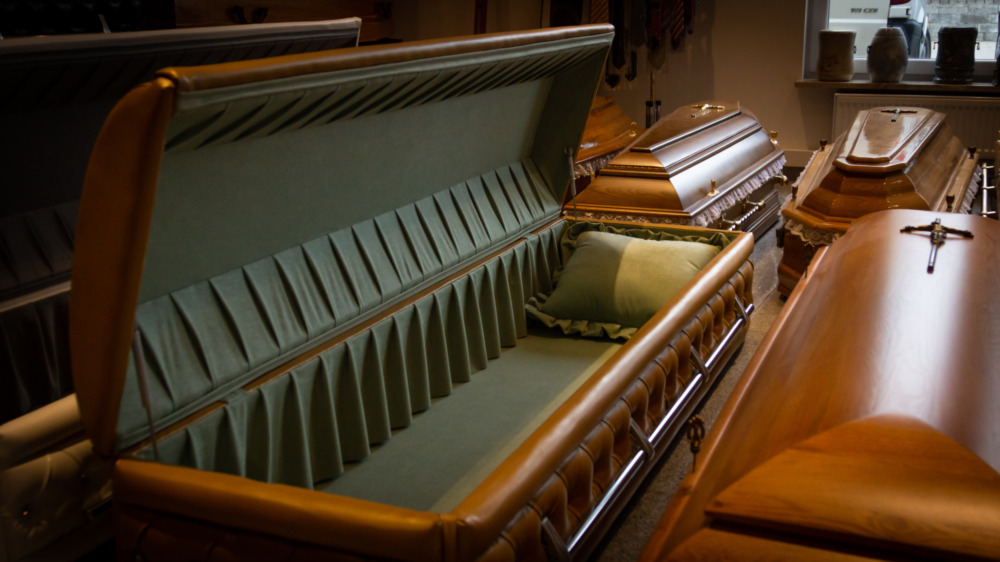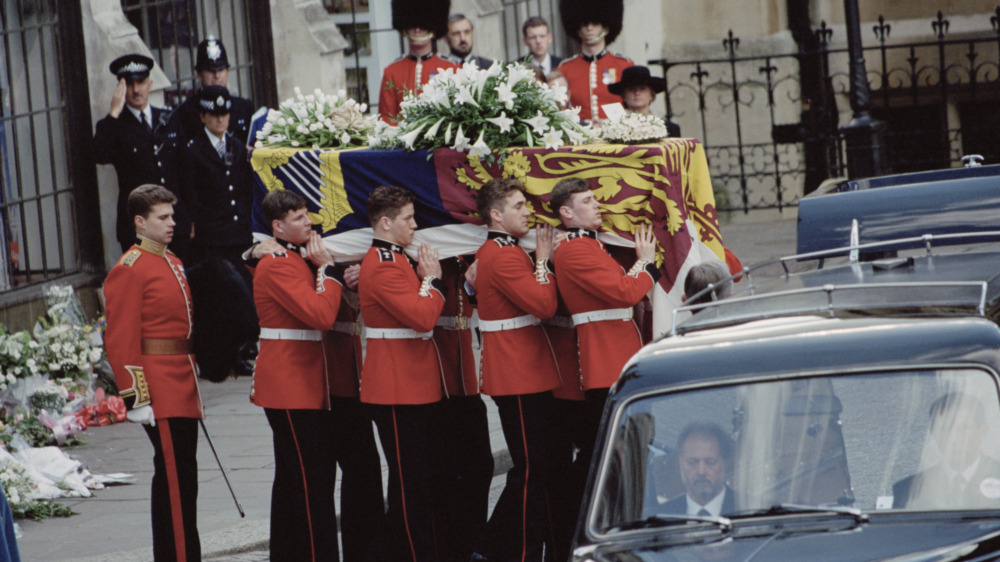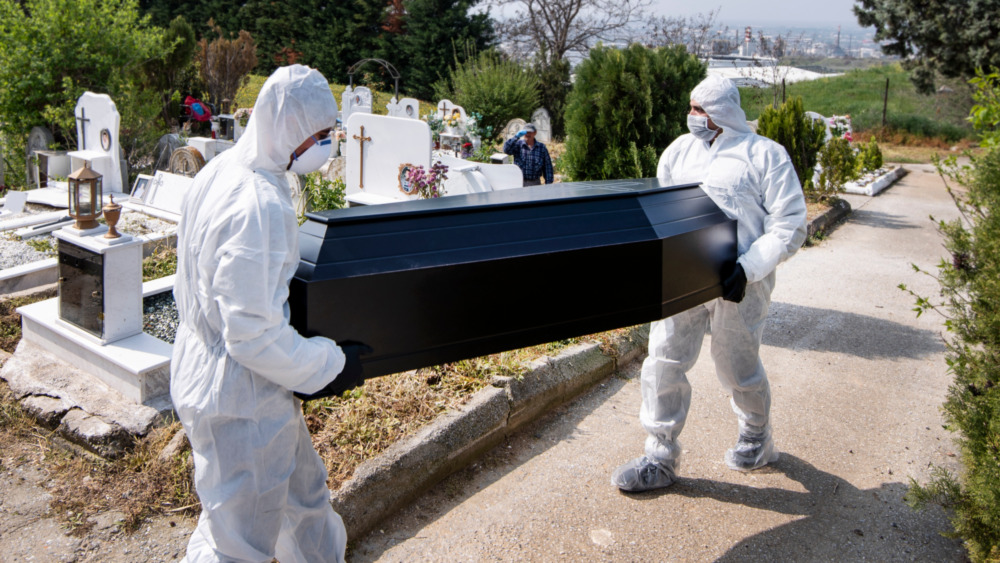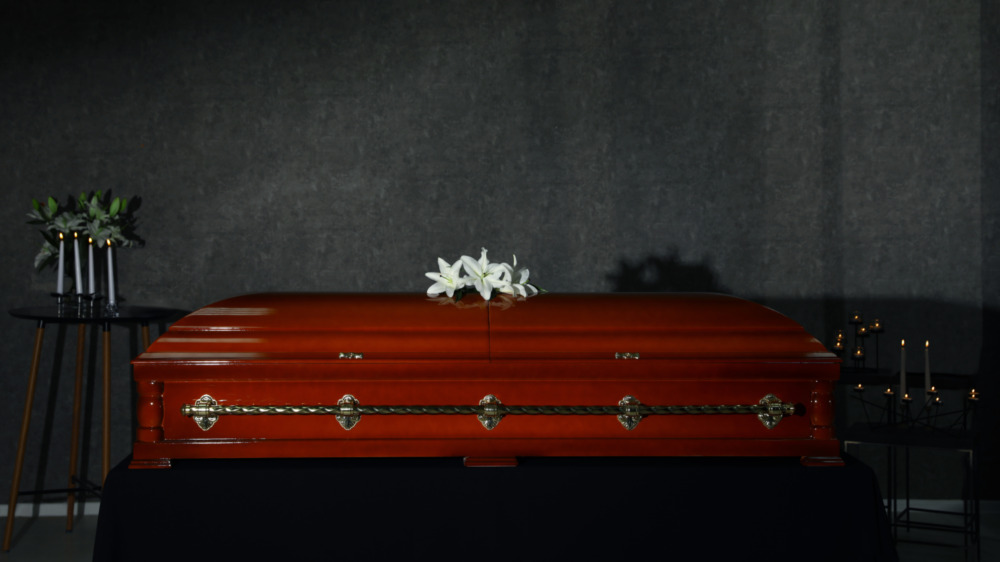Why Members Of The Royal Family Are Buried In Coffins Lined With Lead
If there's one thing that even non-Brits know, it's that the royal family is a stickler for tradition. Among the more obscure rules that members of the family must follow, according to Good Housekeeping, include no shellfish (prone to lead to food poisoning), no public displays of partiality (reportedly, even having a favorite soccer team is a no-go), and no Monopoly (the Windsors are notoriously competitive). It should come as no surprise then, that when it comes to matters of death and burial, the reach of royal tradition extends even to the great beyond.
Unsurprisingly, funerals for the British monarchy are planned well in advance of a family member's death, due to the overwhelming number of details that must be tended to. Among these details is a curious one about the caskets in which royals are buried. No, a member of the royal family doesn't get the standard steel casket that you'll find on display in any funeral home — the truth is far heavier than that. Per the Daily Mail, members of the royal family have typically been interred in lead-lined caskets — and there are a few very interesting reasons for that.
Even Princess Diana's coffin was lined in lead
Metro UK takes us back to a memory many of us may have forgotten about Princess Diana's funeral (overlooked, perhaps, in favor of the bittersweet memory of Princes William and Harry walking behind her casket), reporting that her coffin weighed nearly a quarter of a ton, or about 500 pounds. The Welsh Guard serving as pallbearers could be seen visibly struggling under the coffin's weight. The reason? You guessed it — it, too, was lined with lead.
Why all the extra structural support? Much can simply be chalked up to that most-prized royal attribute — tradition (per I News). It's simply how things have been done, and the monarchy is famously change-averse. In addition to the pull of tradition, though, are a few practical (and legal) reasons for the lead-lined coffins. A sealed casket is airtight, meaning moisture can't get in quite so easily. Because the environment is drier, the remains take much longer to decay — a very real concern for some royal burials since the deceased member of royalty might be moved later on, as was the case for Princess Alice, Prince Philip's mother (via Royal Central) — basically, the royals don't want their beloved family members' decomposing bodies to smell up the vaults they are interred in.
How caskets got their start
The tradition of using personal-sized "boxes" for internment began centuries ago, and usually, those with more wealth could afford better after-death digs. Ancient Egypt and Mesopotamia, for example, had coffin-like structures that were constructed of wood, cloth, or paper (via Assembly). Over the centuries, burial practices began to change. The Celtic tribes, for example, are known for laying out their dead in caskets made from flat stones circa 700 A.D. (via Assembly).
The materials used for burying the dead tended to vary as the years went by, and while people without financial means didn't get much more than a shroud at their burial, others with more money had better options, including hollowed-out trees and stone. During the Middle Ages, Europeans began using lead coffins (via Britannica), and eventually, iron coffins became all the rage in England and Scotland.
In the United States, before the Civil War, caskets were made as they were needed by the local furniture craftsman (who often doubled as the town's undertaker, according to Northwoods Casket), but that war raised a need for ready-to-go coffins due to the innumerable soldiers who died on the battlefield.
How lead-lined caskets might be appealing
While the lead-lined coffins do protect the environment, the more important aspect of using these types of coffins is the preservation of the body. Lead-lined coffins seal out any kind of moisture and air, ingredients needed for decomposition to begin.
Another benefit of the lead-lined coffin also comes from the vacuum-like seal the lining creates. Just as nothing can get in, nothing can get out, either, meaning the smells released during decomposition, which according to Aftermath, are not great: "Some people compare the putrid stench of a decomposing body to that of rotting fruit." Not the smell the royal family wants emanating from their royal vaults.
On a more practical note, Metro UK notes, too, that it is UK law that any interment above ground (as is the case with many members of the monarchy) must be within a sealed casket — hence that lead lining.



